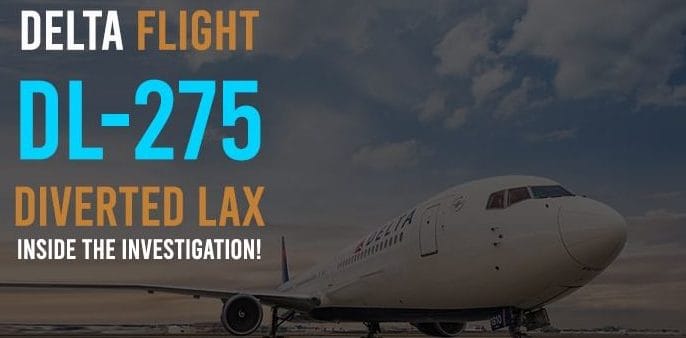When United Airlines Flight UA770 took off on what was supposed to be a routine transatlantic trip, no one expected the unexpected. Midway through the journey, passengers were startled when the aircraft suddenly began descending rapidly. The UA770 emergency diversion became headline news, raising questions about what caused it, how the crew responded, and what happened afterward.
The Flight That Took a Sudden Turn
Flight UA770, operated by a United Airlines Boeing aircraft, was en route from Chicago O’Hare International Airport to a European destination when it faced a technical malfunction mid-flight. The incident led to an emergency diversion UA770 Chicago, forcing pilots to make quick, life-saving decisions.
Witnesses aboard described the experience as both calm and tense — the cabin crew stayed composed, following every mid-flight emergency procedure with precision while reassuring passengers.
UA770 Cabin Pressure Issue: The Root Cause
Initial reports indicate that the UA770 cabin pressure issue was the leading cause of the diversion. A pressurisation alert signaled a potential drop in cabin air pressure, prompting pilots to descend and stabilize conditions before landing at an alternate airport.
Key Details:
- The UA770 pressurisation alert triggered the cockpit’s emergency protocol.
- Oxygen masks were deployed briefly as a safety measure.
- Pilots communicated a 7700 code squawk, signaling a general emergency to air traffic control.
Such issues, though rare, are not unprecedented in aviation. Cabin pressure failures can result from sensor malfunctions, seal leaks, or compressor problems in the aircraft’s environmental control system.
Swift Crew Response and Safe Landing
Thanks to the experienced pilots and trained cabin crew, United Airlines UA770 made a forced landing at an alternate airport without injuries. The airline later confirmed that all 180 passengers and crew members were safe and received full assistance upon landing.
The captain coordinated directly with air traffic control, ensuring a smooth emergency landing UA770. Once the aircraft was on the ground, technical teams began inspecting the UA770 aircraft maintenance requirements to identify the fault.
United UA770 Passenger Rebooking and Assistance
After the diversion, United Airlines prioritized passenger care. Stranded travelers were provided with:
- Hotel accommodations for overnight stays.
- Meal vouchers and ground transport.
- Quick United UA770 passenger rebooking on the next available flights.
Many passengers praised the airline’s professionalism and how the crew handled the entire situation calmly and effectively.
Inside the Cockpit: The Pilots’ Decision
Aviation safety experts applauded the UA770 flight crew for their timely action. When faced with a pressurisation alert, pilots must make split-second choices. Continuing the flight could risk hypoxia (oxygen deprivation), so the safest route was a transatlantic diversion.
The United UA770 transatlantic diversion reflected the airline’s strict adherence to safety over schedule — a standard that’s saved countless lives across the aviation industry.
Technical Malfunction and Maintenance Investigation
Post-landing, engineers conducted a deep UA770 technical malfunction assessment. The Boeing aircraft underwent diagnostic tests to confirm the origin of the issue. Early indications pointed toward a malfunctioning cabin pressure sensor, though the final report from the airline’s technical division is still pending.
Aviation enthusiasts noted that this case underlines the importance of routine aircraft maintenance and post-flight inspections, especially for long-haul international routes.
Aviation Safety and Lessons Learned
Every incident like the UA770 emergency diversion becomes a valuable case study for aviation safety boards. It reinforces the importance of crew training, real-time communication, and preventive maintenance checks.
Lessons from UA770 Incident:
- Proper emergency procedure training saves lives.
- Cabin pressure systems require rigorous testing.
- Quick ATC coordination reduces diversion risks.
- Passenger communication is crucial during in-flight crises.
By acting swiftly, the crew turned a potential disaster into a success story of aviation safety and professionalism.
Passenger Experiences During the UA770 Emergency
Several passengers took to social media to describe their experiences, with most noting that while the descent felt abrupt, the crew’s reassurance helped keep panic to a minimum.
“The oxygen masks came down, but the flight attendants stayed calm, explaining everything. That helped a lot,” said one traveler.
The UA770 mid-flight emergency procedure demonstrated how well-trained airline staff can maintain order even under pressure.
United Airlines’ Official Response
In a statement, United Airlines confirmed:
“Flight UA770 diverted as a precaution due to a possible pressurization issue. The flight landed safely at a nearby airport, and all customers were re-accommodated. We apologize for the inconvenience.”
The company emphasized that passenger safety remains its highest priority and that the aircraft would undergo a full post-diversion maintenance review before returning to service.
Frequently Asked Questions (FAQs)
1. What caused the United Airlines UA770 emergency diversion?
Preliminary reports suggest a cabin pressure issue triggered an emergency pressurisation alert, prompting the pilots to divert for safety.
2. Where did UA770 land after the diversion?
The UA770 forced landing took place at the nearest available airport suitable for large aircraft, following standard aviation emergency protocols.
3. Were any passengers injured during the UA770 incident?
No injuries were reported. The crew’s quick response ensured everyone’s safety during the UA770 emergency landing.
4. How did United Airlines assist passengers after the diversion?
Passengers received rebooking options, hotel stays, and meal assistance. United Airlines also issued formal apologies for the disruption.
5. What is the “7700 code squawk” mentioned in reports?
The 7700 transponder code is a universal distress signal that alerts air traffic control of a flight emergency — in this case, used by UA770.
6. What steps will United Airlines take to prevent such issues?
The airline’s technical team and aviation safety unit will inspect the aircraft, update procedures, and reinforce maintenance schedules to ensure no recurrence.
Final Thoughts
The United Airlines Flight UA770 emergency diversion reminds us that aviation safety is about preparation and precision. While a technical malfunction led to a tense moment, the flawless teamwork between pilots, crew, and air traffic control ensured every passenger arrived safely.
In an age where air travel connects the world, this event proves that even in emergencies, United Airlines’ commitment to safety remains unwavering — a testament to training, technology, and trust in the skies.




Leave a Reply